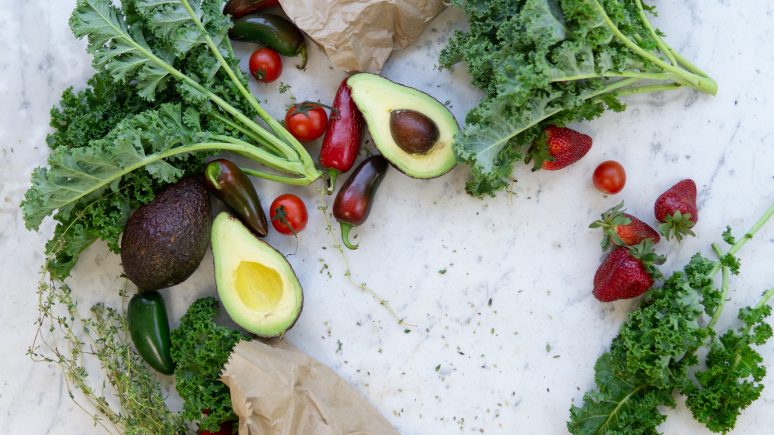Introduction
Every day we consume lots of foods, ingesting various macro and micronutrients. Lectins are carbohydrate-binding proteins contained in foods, mainly in plants. Some people believe that lectins may interfere with normal digestion, increase inflammation in the body, cause brain fog and weight gain, and lead to other unpleasant symptoms. However, such claims are controversial and more studies are needed in this area.
A lectin-free diet is a nutritional approach that encourages people to eliminate lectin-containing foods from their diet. It involves avoiding beans, lentils, grains, cow milk, etc. Proponents of this nutritional approach state that the lectin-free diet can help boost your energy levels and mood, improve gut health, reduce bloating, decrease the risk of getting sick, and lose weight. However, research is needed to prove these claims.
Key points
The main rule of the lectin-free diet is eliminating all foods containing high levels of lectins. These include:
- legumes (beans, lentils, chickpeas, peanuts)
- foods containing peanuts (peanut butter, peanut oil)
- grains, flour, and products made with them (bread, pasta, cakes)
- nightshade vegetables (tomatoes, eggplants, potatoes, peppers, etc.)
- cow milk and dairy products
- grain-fed meat, poultry, and seafood
- some nuts (cashews, almonds)
While following the lectin-free diet, you should focus on eating foods that are low in lectins or don’t contain them. The list of such foods includes:
- some fruits (apples, apricots, plums, peaches, nectarines, citrus fruits, kiwi, passion fruit, pomegranates)
- berries (strawberries, blueberries, cherries, raspberries, blackberries, cranberries)
- vegetables (asparagus, artichoke, leafy greens, arugula, lemongrass, watercress, bock choy, collards, broccoli, cauliflower, Brussels sprouts, kimchi, sauerkraut, leeks, scallions, onions, ginger, garlic, chives, beets, pumpkins, carrots, radishes, mushrooms, cabbage, radicchio, kohlrabi, Swiss chard, rutabaga, celery, okra, sweet potatoes, chicory, puntarella)
- animal proteins (fish, seafood, poultry, eggs, red meat, organ meats)
- olives
- oils (olive oil, avocado oil, macadamia oil, black seed oil, coconut oil, canola oil, cod liver oil, MCT oil, walnut oil, pistachio oil, rice bran oil, perilla oil, sesame oil, red palm oil)
- some nuts and seeds (Brazil nuts, hazelnuts, pecans, macadamia nuts, pine nuts, walnuts, pistachios, pili nuts, flaxseeds, hemp seeds, sesame seeds, psyllium seeds, Sacha Inchi seeds, coconut)
- non-cow dairy products
- almond and coconut flour
- dark chocolate
Contraindications
Pregnant and breastfeeding women, children, and people with underlying health conditions should consult their doctor before trying this nutritional approach.
How to avoid possible nutritional deficiencies
The lectin-free diet encourages avoiding entire food groups. Therefore, following this nutritional approach, you may develop a deficiency in several key nutrients. Nutrients at risk include B vitamins, vitamin D, calcium, folate, zinc, magnesium, and fiber. To fulfill the body’s needs for these molecules, make sure you consume some of the following foods:
- B vitamins: leafy greens, avocados, eggs, poultry, beef, organ meats (especially liver), clams, fish (salmon, trout);
- vitamin D: egg yolks, fish (salmon, tuna, sardines, herring, swordfish), cod liver oil, beef liver, mushrooms;
- calcium: fish (salmon, tuna, sardines), leafy greens, rhubarb, figs, seeds;
- folate (vitamin B-9): leafy greens, asparagus, beets, avocados, citrus fruits, papaya, nuts, seeds, eggs, beef liver;
- zinc: eggs, red meat, shellfish, nuts, seeds, dark chocolate;
- magnesium: fish (salmon, mackerel), leafy greens, avocadoes, bananas, nuts, seeds, dark chocolate;
- fiber: berries (strawberries, raspberries), fruits (avocadoes, apples, bananas), vegetables (broccoli, artichoke, carrots, beets), dark chocolate;
It may be challenging to receive enough listed nutrients from the food only, especially when the diet is restrictive. An alternative way to meet your body’s requirements is by taking supplements. Visit your doctor to discuss possible supplements you may need.
Tips on improving your dieting experience
Eliminating legumes, grains, nuts, and other food groups from your diet may be too restrictive for some people. Luckily, we have tips that can help you reduce the consumption of lectins without overly limiting your food choices. They are:
- To cook beans, soak them in water for several hours and then boil for a few more hours. It will help inactivate most of the lectins contained in beans.
- Sprout beans and grains and remove the outer hull of beans and wheat grains to reduce the amount of lectins contained in these foods.
- When cooking plants high in lectins, peel and remove seeds from them to decrease lectin content.
- Fermenting vegetables and fruits helps significantly reduce lectins in them and provides you with probiotics that beneficially affect the gut.
Conclusions
A lectin-free diet is a nutritional approach that promotes eliminating high-lectin foods to improve gut health, reduce inflammation, boost energy, and lose weight. However, research-based evidence of this diet’s beneficial effects is lacking.
Giving up whole food groups can be overly restrictive and unsustainable, increasing the risk of developing nutritional deficiencies. In addition, it can be unnecessary because most people can consume lectin-containing food without adversely affecting their health.
If you want to try the lectin-free diet, consult a doctor first to discuss if this nutritional approach will be suitable for you.














Leave a Reply
You must be logged in to post a comment.